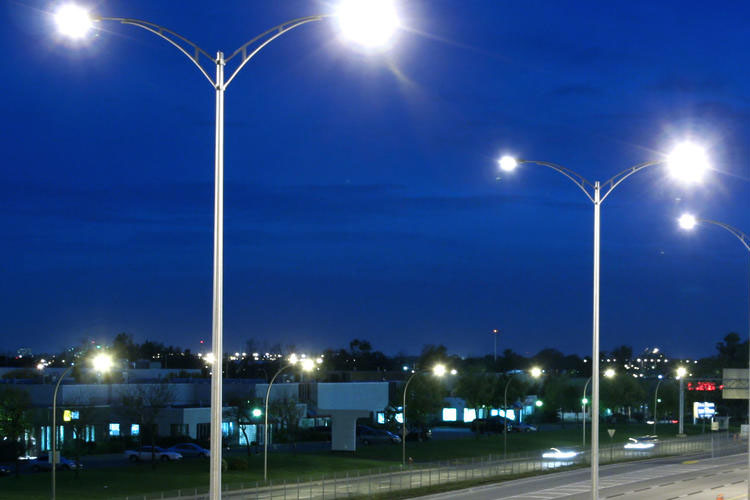
Overview
These are basically source of lights for the road or other open air public places for night time. These are very important for public safety and security. It also helps in preventing intrusion. Few of them are consists of light-sensitive photocells that makes the lamp get on automatically at proper time, especially when its dark. It reduces the risks of night time accidents. It discourages vandalism.
Mainly it uses LED incandescent, mercury vapor, high pressure sodium, low pressure sodium, metal halide, and high intensity discharge bulbs. These bulbs can provide the proper amount, color, and temperature of light that is required for this purpose. Among them LED is the most current technology.
Different types of Street Lights:
Metal Halide Street Lights:
These are generally used in streetlights, parking lot lights, and stadium lights due to their very bright color. These are very efficient. It has white colored light and have good color rendering.
High Pressure Sodium (HPS) Street Lights:
These are generally used street light globally. These lights are functioning via mixture of gases that produces light. It requires very little/less maintenance and is fairly efficient.
Low Pressure Sodium (LPS) Street Lights:
Its working principle is same as HPS light, but it produces warm yellow light instead of white light.
Light Emitting Diode (LED) Street Lights
LED technologies are one of the most recent technologies used in streetlights. It is an energy saving solution for street lights. LEDs emit whitish blue light.
Phosphor-Converted Amber (PCA) LED Street Lights:
This is being introduced on the market for the past 2-3 years. They are energy saver lights with good color representation, yet expensive. Few
Narrow-Band Amber (NBA) LED Street Lights:
This is also very new technology and emits warm yellow color and has good color rendering yet expensive. They are very efficient.
Different types of Light Bulbs:
Incandescent Bulbs:
These are typical bulbs, where the electricity makes a tungsten filament glows and in turn it illuminates the bulb. The bulb is filled with nitrogen gas and is available in different sizes such as GLS, globe, candies, mushroom etc. These can work for 700–1000 hours. It’s not energy saver.
Fluorescent Lamps:
The mechanism of these lamps is more complex than the incandescent bulbs. In this case when the electricity passes between the cathodes, the mercury and other gasses which are there in the bulb gets excited and in turn radiates energy. It has phosphorous coating outside the bulb and it converts the radiant energy into visible light. These use less energy to produce light and can last longer.
Compact Fluorescent Lamps (CFL):
These have basically replaced the traditional bulbs rapidly in homes and commercial building. Working principle here is energy saver. It has a tubular loop that is filled with mercury. It has a long life up to 10000 hours and has higher luminous efficiency.
Halogen Lamps:
These are basically an improved version of incandescent bulbs. Here the tungsten filament is covered with a transparent envelope. It has filled with Halogen with an inert gas. This inert gas increases the brightness and lifespan of the bulb .It has a higher luminous efficiency.
Light Emitting Diode (LED):
This is basically a semiconductor device where the electricity is applied to the negatively charged diode that results the release of the photon. These cause to emit light from the diode.
Application:
Street
Airport
Railway station
